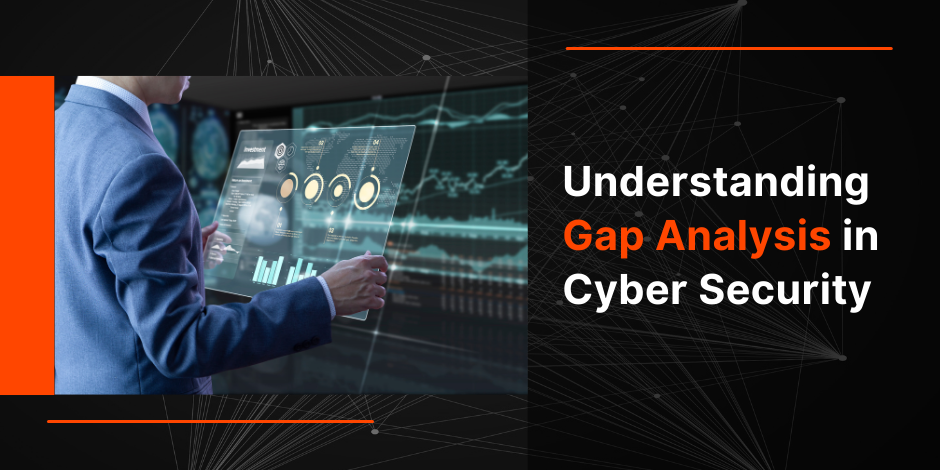Understanding Gap Analysis in Cybersecurity

Stay Informed With Our Weekly Newsletter
Receive crucial updates on the ever-evolving landscape of technology and innovation.
In today’s digital age, where gap analysis in cybersecurity has become crucial for individuals and organizations, it’s absolutely vital for companies to consistently assess their security measures and identify any gaps that may exist.
According to IBM’s annual cost of a data breach report in 2021, data breaches cost companies 4.2 million dollars last year. This is where gap analysis comes into play, helping companies proactively address potential vulnerabilities and safeguard against such substantial financial losses.
Defining gap analysis

Gap analysis is a systematic approach used to assess the current state of cybersecurity within an organization and identify areas where improvements are needed.
By comparing the existing security measures to industry best practices and regulatory requirements, organizations can gain valuable insights into potential vulnerabilities and areas of weakness.
The role of gap analysis in cybersecurity
Gap analysis in cybersecurity plays a crucial role, providing organizations with a comprehensive understanding of their security posture. It enables them to determine whether their current security measures align with their overall objectives and the level of risk they are willing to accept.
Key components of gap analysis
Gap analysis comprises several key components that help organizations in assessing their cybersecurity posture. These components include:
- Identifying the scope: Organisations must define the scope of the gap analysis in cybersecurity, which typically involves determining the specific areas of the business that will be assessed. This ensures that the analysis is focused and targeted, allowing for a more accurate evaluation of the organization’s security measures.
- Establishing the standards: Organisations need to establish the standards against which their security controls will be evaluated. These standards often include industry best practices, regulatory requirements, and internal policies.
- Gathering information: Organisations need to gather relevant information, such as current security policies, procedures, and controls in place. This information provides the foundation for the analysis and helps identify potential gaps in the organization’s security measures.
- Evaluating the current state: The current state of cybersecurity within the organization is evaluated by comparing the existing security controls against the established standards.
- Identifying gaps: Based on the evaluation, any gaps or deficiencies in the current security measures are identified. These gaps may include outdated policies, inadequate security controls, or insufficient employee training.
- Developing an action plan: Organisations create an action plan to address the identified gaps and enhance their security posture. This plan outlines the steps and resources required to close the gaps and improve the organization’s overall cybersecurity effectiveness.
The importance of gap analysis in cybersecurity

Undertaking regular gap analysis in cybersecurity is crucial for organizations to ensure that their safety measures are robust and effective. It brings several significant benefits, including:
Identifying vulnerabilities
Gap analysis in cybersecurity helps organizations identify vulnerabilities in their security controls and processes. By assessing the current state of cybersecurity, organizations can uncover potential weaknesses that could be exploited by malicious actors.
This allows them to prioritize and allocate resources to address these vulnerabilities before they are exploited.
Enhancing security measures
Conducting a gap analysis enables organizations to identify areas where their security measures can be enhanced.
By comparing their existing controls to industry best practices, organizations can identify areas for improvement and implement necessary measures to mitigate risks effectively.
Steps in conducting a cybersecurity gap analysis
Conducting a cybersecurity gap analysis involves several key steps that organizations should follow to ensure a thorough and effective assessment:
Preparing for the analysis
Before conducting the analysis, organizations need to define the scope of the assessment, establish the standards against which the security controls will be evaluated, and gather the necessary information.
This includes collecting information on existing security policies, procedures, and controls, as well as any relevant industry standards and regulatory requirements.
Conducting the analysis
During this phase, organizations evaluate their current security controls against the established standards and identify any gaps or deficiencies.
This typically involves reviewing policies and procedures, conducting technical assessments, and interviewing key stakeholders to ensure a comprehensive assessment.
Interpreting the results
Once the analysis is complete, organizations need to interpret the results and make sense of the findings. This includes prioritizing the identified gaps based on their potential impact and likelihood of occurrence.
Challenges in implementing gap analysis
While gap analysis in cybersecurity is a valuable tool for improving digital safety, organizations may face certain challenges during its implementation:
Common pitfalls and how to avoid them
One common pitfall in conducting a gap analysis in cybersecurity is relying solely on internal resources. Organizations should consider engaging external cybersecurity experts to provide an unbiased assessment and ensure a more comprehensive analysis.
Overcoming resistance to change
Implementing the necessary changes may face resistance from employees who are accustomed to existing processes and controls.
Organizations should address this resistance through effective change management strategies, such as clear communication, training, and involving employees in the decision-making process.
Future trends in cybersecurity gap analysis

As the cybersecurity landscape continues to evolve, so will the future trends in gap analysis:
The role of AI and machine learning
AI and machine learning technologies are expected to play a significant role in future gap analysis efforts. These technologies can automate the analysis process, making it more efficient and less resource-intensive.
AI-powered tools can also detect patterns and anomalies in data, enhancing the accuracy and effectiveness of gap analysis in cybersecurity.
The impact of emerging cyber threats
With the emergence of new cyber threats, gap analysis in cybersecurity will need to adapt to address these evolving risks. Future gap analysis efforts will focus on assessing and mitigating risks posed by emerging technologies such as the Internet of Things (IoT), cloud computing, and artificial intelligence.
This will require organizations to stay vigilant and continuously update their security measures to address the ever-changing threat landscape.
In conclusion
Understanding gap analysis in cybersecurity is crucial for organizations to identify potential vulnerabilities and weaknesses in their security measures.
By undertaking regular gap analysis, organizations can enhance their security posture, mitigate risks, and stay ahead of evolving cyber threats.
To strengthen your expertise in cybersecurity and effectively contribute to safeguarding digital assets, consider exploring the Institute of Data’s specialized Cybersecurity program. Our program equips you with the knowledge and skills needed to excel in this critical field.
Alternatively, if you’d like personalized guidance on your career path in cybersecurity, don’t hesitate to schedule a career consultation with our team of experts.




